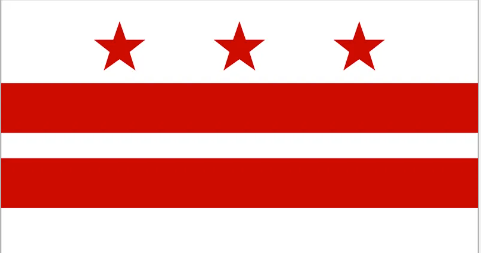United States
Washington D.C. : Justice For All

Washington DC is the capital of the United States and is located on the East Coast of the country. The city has a population of over 600,000 people and is a major tourist destination. Washington DC is home to many historical landmarks and museums, as well as being the seat of the US government.
The city was founded in 1791 by George Washington, who also served as the first President of the United States. Washington DC is named after him. The city was designed by French architect Pierre L’Enfant and is laid out in a grid pattern. Washington DC is divided into four quadrants: Northwest, Northeast, Southeast, and Southwest.
Washington DC has a long history of racism and segregation. African Americans have been living in the city since its founding, but they were always subjected to discrimination and Jim Crow laws. Segregation was codified into law in 1867, and Washington DC remained a segregated city until 1954 when the Supreme Court ruled that segregation in public schools was unconstitutional.
Despite this ruling, Washington DC remained a segregated city, with separate schools, restaurants, and other public facilities for whites and blacks. It was not until the early 1960s that the Civil Rights movement began to gain traction in Washington DC, and desegregation slowly started to take place. In 1963, President John F Kennedy issued an Executive Order which banned discrimination in federally-funded housing projects. This was a major step forward in the fight against segregation in Washington DC.
The city has come a long way since its segregated past, but there is still a long way to go. Racism is still a problem in Washington DC, and the city has one of the highest income disparities between whites and blacks in the country. African Americans make up over half of the population of Washington DC, but they are disproportionately represented among the city’s poor and unemployed.
Racism is a deeply ingrained problem in Washington D.C., the capital of the United States of America. Despite the fact that the city has a diverse population, with a majority of Black residents, systemic racism continues to affect various aspects of life in the city.
One of the most evident manifestations of racism in D.C. is in the criminal justice system. The city’s police force has a history of disproportionately targeting and arresting people of color, particularly Black people. According to a report by the Washington Lawyers’ Committee for Civil Rights and Urban Affairs, between 2013 and 2017, Black people in D.C. were 10 times more likely to be arrested for drug offenses than white people, despite similar rates of drug use between the two groups. This is just one example of the many ways that racism plays out in the criminal justice system.
Another area in which racism is evident is in housing. Historically, Black people in D.C. have been subject to discriminatory practices when it comes to housing, such as redlining and racial covenants that prevented them from purchasing or renting property in certain areas. While these practices are now illegal, their legacy continues to impact Black communities in D.C. today. Gentrification, which is the process of wealthier people moving into a previously working-class or low-income area and driving up property prices, has disproportionately affected Black communities in D.C. This has resulted in the displacement of many long-time Black residents who are unable to afford the rising costs of living in their neighborhoods.
Additionally, racism can be seen in the education system in D.C. Black students are more likely to attend schools that are underfunded and have lower quality facilities, which can lead to disparities in educational outcomes. In addition, Black students are disproportionately disciplined, with harsher punishments for the same behaviors as their white peers. This contributes to the school-to-prison pipeline, which is the idea that students who are punished more harshly in school are more likely to end up in the criminal justice system.
Finally, racism is also present in healthcare in D.C. Black people are more likely to face health disparities and experience poorer health outcomes compared to white people. For example, Black women in D.C. have higher rates of maternal mortality than white women. Additionally, Black people are more likely to live in areas with limited access to healthcare facilities, which can exacerbate existing health disparities.
In conclusion, racism is a pervasive problem in Washington D.C. that affects various aspects of life in the city, from the criminal justice system to housing, education, and healthcare. It is important for the city’s leaders and residents to recognize the impact of systemic racism and take steps to address it.













You must be logged in to post a comment Login